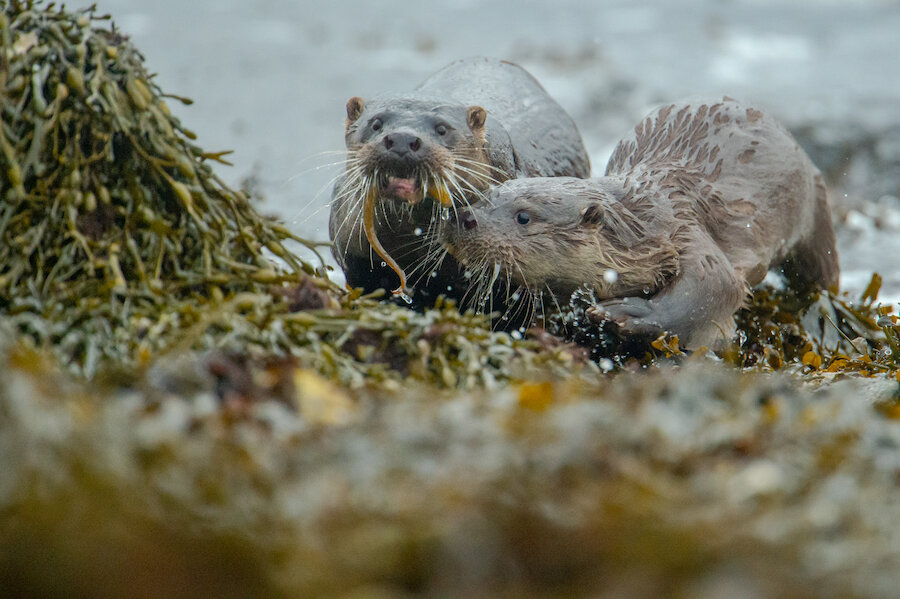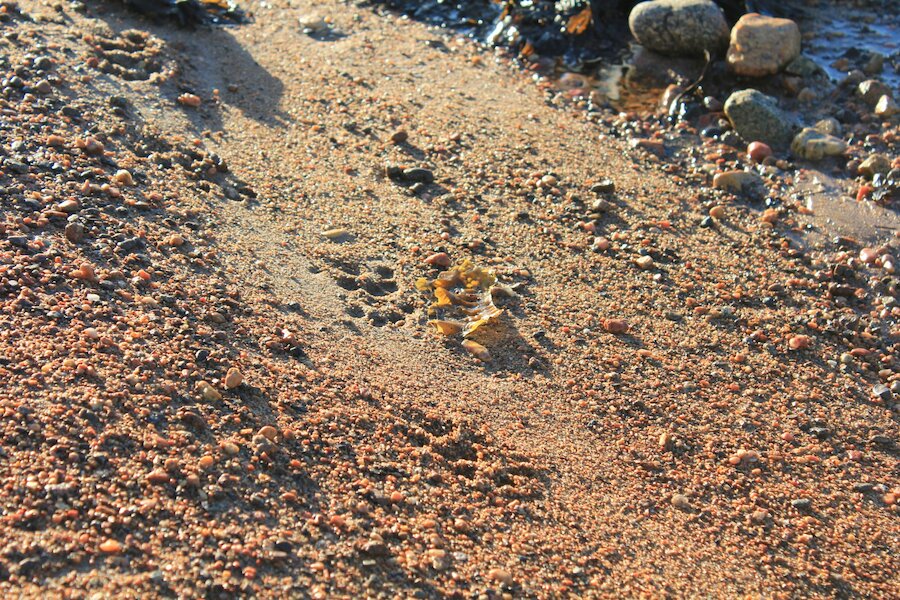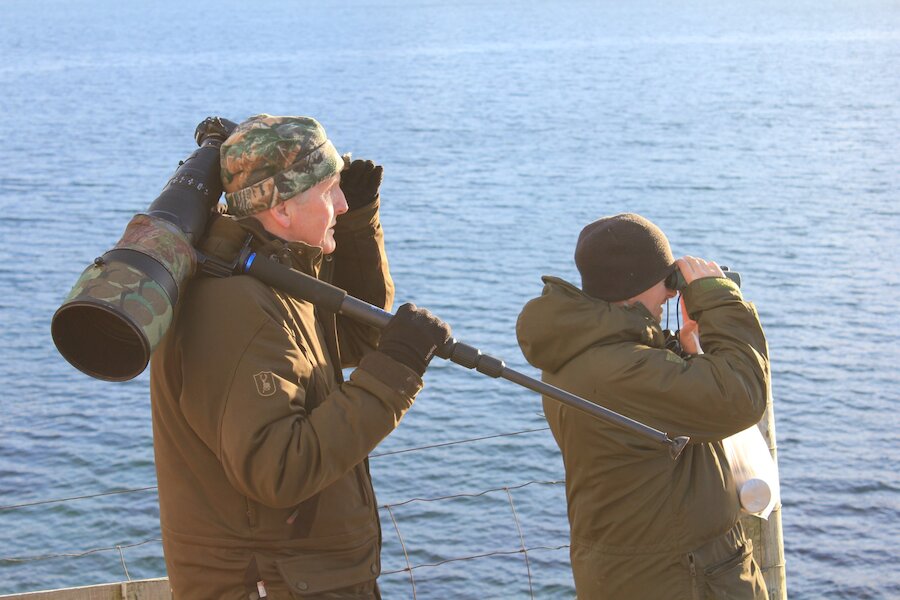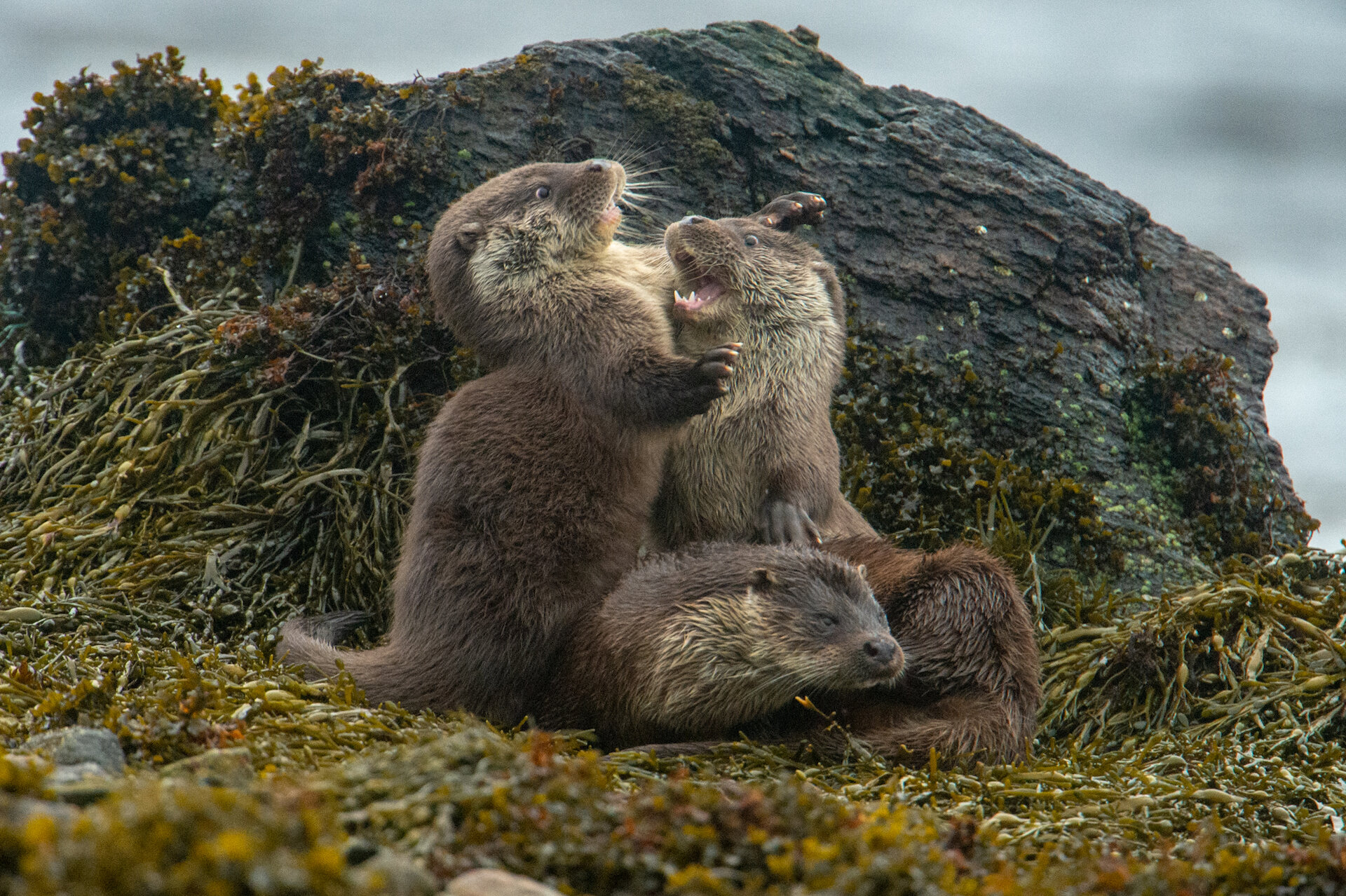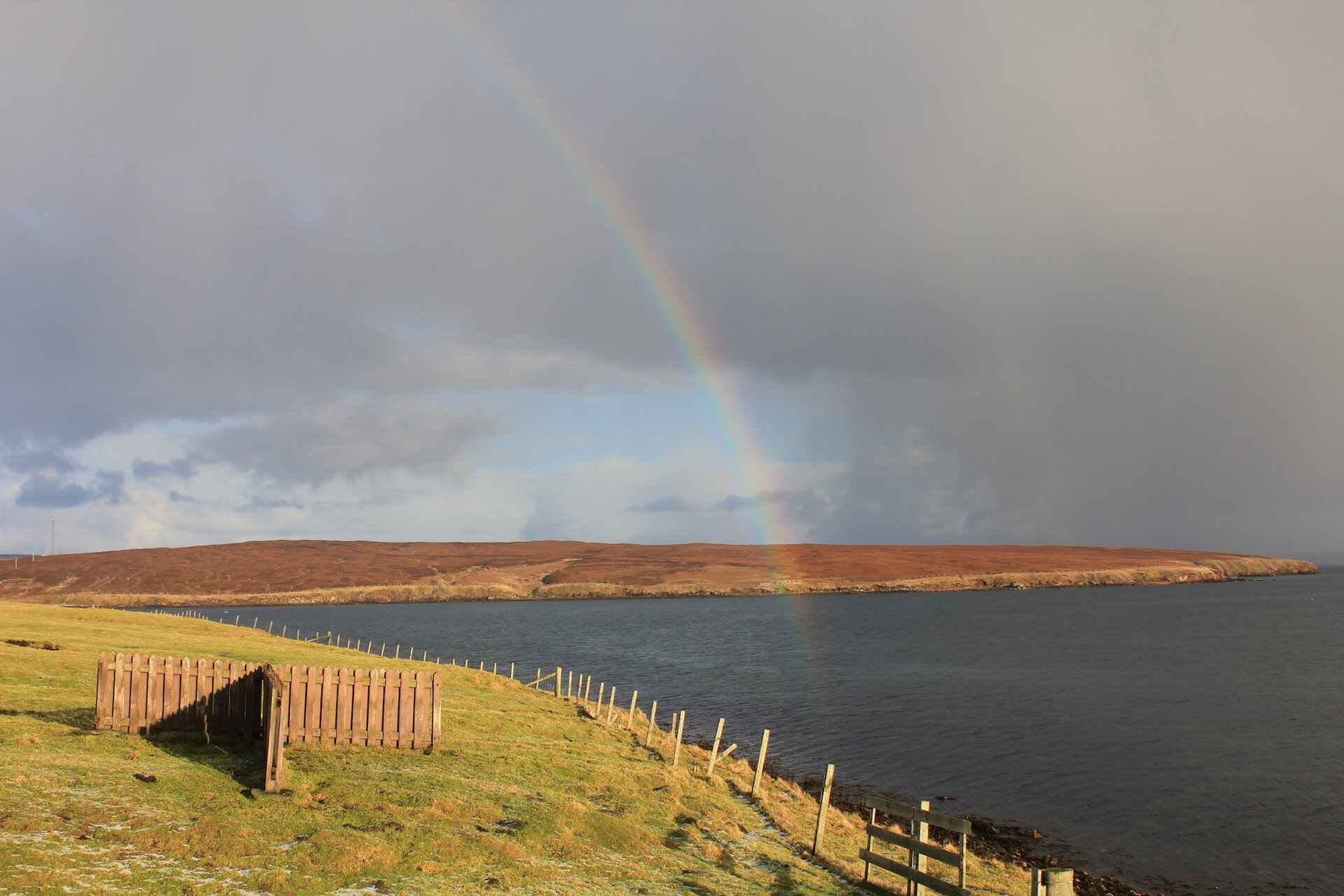Shetland’s world-famous wildlife makes a trip to the isles a ‘must’ for any wildlife enthusiast. But while it’s easy enough to go for a wander and bump into breathtaking seabird colonies, unique wild flowers and (if you’re lucky) pods of whales, there’s one species that it’s harder to just stumble across: the otter. These shy aquatic mammals live in the voes up and down the isles, hunting for fish in kelp forests under crystal-clear waters. And if you want to find them, you have to know where to look.
Richard Shucksmith knows where to look for otters better than anyone. Since moving to Shetland 14 years ago, Richard has been observing, photographing, tracking and writing about otters. If anyone knows how to find them, it’s him.
Richard was kind enough to invite me along on an otter-spotting trip. We met up on a cold, clear January morning where he was taking Cameron, a keen wildlife photographer from Yorkshire, out for an otter photoshoot. Cameron explained that, while he has been to Shetland a number of times before, this was his first time photographing wildlife; a colleague at the Camera Club in Yorkshire had recommended Richard’s services as a guide for getting that perfect shot of an otter in the wild.
We headed out to a voe in North Mainland, where Richard knew three families of otters resided. He requested that the exact location be kept a secret: otters are shy creatures, and in the interests of keeping their habitat undisturbed I agreed not to disclose it. The reason for going to this particular voe on this particular day, Richard said, was due to the south-easterly wind- otters have an incredible sense of smell, and approaching from upwind will tip them off and send them fleeing.
“It’s all about wind direction with otters,” he said. “You want to work into the wind.”
